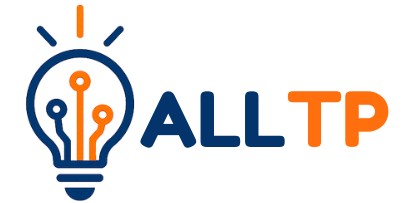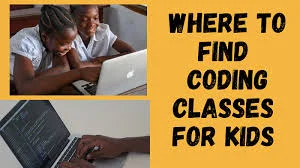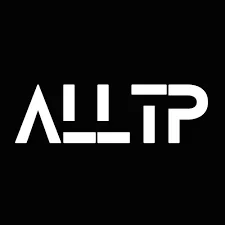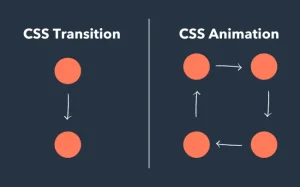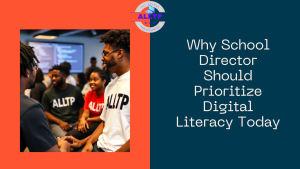In today’s rapidly evolving digital world, the demand for tech-savvy talent is growing, and it starts with children. Across Kenya and globally, digital skills are no longer optional; they are essential. From how we work to how we solve problems, technology is at the center of innovation.
Parents, now is the time to act. Enroll your child in our coding for kids bootcamp and give them the tools to become confident digital creators. Whether they’re just starting out or exploring more advanced challenges, our program offers coding for beginners that makes learning fun, interactive, and age-appropriate.
Why Coding for Kids?
Introducing children to coding at an early age goes far beyond teaching them how to type lines of code, it’s about building a foundation for how they think and solve problems. Coding encourages critical thinking, creativity, and logical reasoning, helping kids learn how to break down complex problems into manageable steps.
Through project-based learning, kids develop not only technical skills but also resilience, learning to debug, try again, and succeed. These skills are useful far beyond the computer screen.
In Kenya, coding is increasingly relevant thanks to the Competency-Based Curriculum (CBC), which emphasizes hands-on learning, innovation, and preparing students for real-world careers. Coding aligns perfectly with CBC goals by promoting self-driven learning, collaboration, and the ability to create digital solutions.
Moreover, when kids learn to code, they gain confidence in using technology and working with others. Whether building a game, a website, or a mobile app, coding projects often require teamwork, communication, and digital literacy, all critical skills for the future workforce.
By starting young, children are better equipped to not just participate in the digital world, but to shape it.
What to Look for in a Coding Class
Not all coding programs are created equally, especially when it comes to children. To ensure your child gets the most out of their learning experience, it’s important to choose a program designed specifically for young learners, one that combines fun with foundational tech skills.
That’s why more parents are turning to the principles of Coding Kenya, a growing effort to make coding accessible, age-appropriate, and impactful for every child across the country. Our bootcamp offers tailored programs for kids up to 16 years old, using engaging projects and hands-on learning to build real digital skills step-by-step.
Here are a few key features to look for in a kids’ coding program:
- Hands-On Learning: The best programs go beyond theory. Kids should be actively building games, animations, or apps from day one. This keeps them engaged and reinforces learning through doing.
- Age-Appropriate Tools: Depending on your child’s age and experience, different tools are suitable. Beginners might start with visual platforms like Scratch or Blockly, while older or more advanced kids can move on to real coding languages like Python or JavaScript.
- Project-Based Learning: Children learn best when they can create something meaningful. Look for programs that allow kids to complete small projects they can showcase, which helps build a sense of achievement.
- Mentorship and Support: Guidance matters. Quality programs offer structured mentorship, with instructors who are patient, experienced, and passionate about teaching kids.
Online vs In-Person Classes: What’s Better?
Both formats have their advantages:
- In-Person Classes offer real-time interaction, group collaboration, and often more focused attention, great for younger children or those who thrive in a social learning environment.
- Online Classes provide flexibility and access to a wider range of resources and instructors, ideal for busy families or kids who are already comfortable using digital devices.
Whichever format you choose, make sure the learning environment is fun, supportive, and safe.
Top Affordable Coding Classes for Kids in Nairobi
Nairobi is quickly becoming a hub for digital education and that includes a growing number of accessible, kid-friendly coding programs. If you’re a parent looking for a balance between quality and affordability, here are five standout options:
1. All Things Programming Bootcamp
- Location: Online-based (accessible from anywhere in Nairobi and beyond).
- What Makes It Special: This bootcamp is known for its hands-on, project-based approach, where kids not only learn how to code but build real-world digital products like apps, games, and websites. Sessions are guided by mentors from the tech industry, making it both practical and inspiring.
- Age Range: 4–30+ years.
- Teacher: Trained software developers offering live classes+
- Programs Offered: Weekend online classes, school holiday virtual bootcamps, and term-based coding tracks.
- Affordability Highlights: Flexible payment plans, family discounts, and free introductory sessions for new learners.
2. Digikids by Strathmore University
- Type: Weekend and holiday coding camps.
- Tools Used: Scratch, Python, mobile app development, and introductory AI.
- Target Age: 6–17 years.
- Why It’s Great: Operated by the university’s iLab Africa center, Digikids gives children exposure to real-world tools and instructors with academic expertise.
- Pricing: Moderate, subsidized in part by the university. Discounts available for repeat students.
- Availability: Limited spots; early booking recommended.
3. KidzComp Tech
- Overview: A community-driven initiative that offers affordable coding and robotics classes across various Nairobi neighborhoods.
- Subjects Covered: Scratch, electronics, Python, game development, and robotics.
- Age Group: 7–17 years.
- Locations: Satellite centers in Umoja, Rongai, Eastleigh, and Thika Road areas.
- Enrollment: Flexible registration options including term-based and weekend programs.
- Affordability: One of the lowest-cost programs on this list, designed for accessibility.
4. eMobilis Tech Institute – Kids Code Camp
- Program Type: Short-term holiday coding camps.
- Subjects: Coding, mobile app creation, robotics, animation, and digital creativity tools.
- Target Age: 8–16 years.
- Why Choose eMobilis: Backed by a reputable tech institute, this program gives kids early access to real tech environments and practical tools.
- Pricing: Budget-friendly, with scholarships occasionally available for top-performing students.
- Location: Westlands, Nairobi.
5. Code With Kids Kenya
- Format: Online and in-person hybrid classes.
- Focus Areas: Game development, creative coding, logic-based problem-solving.
- Best For: Families looking for flexibility, especially for homeschooling or busy weekday schedules.
- Teaching Style: Fun, interactive, and innovation-driven — encouraging kids to think like inventors.
- Cost: Mid-range pricing with package discounts and referral bonuses.
Each of these programs offers a unique experience, but all share one common goal: empowering children through digital skills, without putting financial strain on families.
Free & Low-Cost Online Alternatives
If you’re not ready to commit to a full coding program or are looking for ways to supplement your child’s learning at home, there are several excellent online platforms that are both educational and completely free or very low-cost.
Here are some of the best:
1. Scratch (by MIT)
- What It Is: A free, beginner-friendly platform developed by MIT where kids can create interactive stories, games, and animations using drag-and-drop blocks.
- Best For: Ages 6–12.
- Why It Works: Scratch is highly visual and creative, making it a perfect entry point into the world of coding.
2. Code.org
- Overview: A global nonprofit platform offering structured, gamified coding courses for kids of all ages.
- Features: Courses in basic coding, web development, and even AI. Their “Hour of Code” is a great way to get started.
- Best For: Ages 5 and up.
- Cost: Free.
3. Tynker
- What It Offers: Interactive lessons in coding, game development, and animation.
- Best For: Kids aged 7–14.
- Cost: Some content is free; full access requires a subscription. However, many schools in Kenya are beginning to adopt Tynker as part of their curriculum.
- Highlight: Tynker’s lessons are highly gamified and appealing to kids who enjoy Minecraft or Roblox.
4. Khan Academy – Computer Programming
- Focus Areas: JavaScript, HTML/CSS, and animation using ProcessingJS.
- Best For: Kids aged 10+ who are ready to try real code.
- Strength: Clear, bite-sized video tutorials and interactive coding challenges.
- Cost: 100% free.
When to Pair These Tools with Classes or Mentorship
While online tools are a fantastic starting point, they work best when paired with guidance from a mentor or structured class, especially for younger kids. Mentors can help:
- Keep your child motivated and consistent.
- Explain difficult concepts when your child gets stuck.
- Offer feedback on their projects.
- Encourage creativity and problem-solving through collaboration.
A hybrid approach using free tools at home and attending an affordable local class is often the most effective (and budget-friendly) path.
Tips for Parents on Maximizing Value
Getting your child started with coding doesn’t have to be overwhelming or expensive, especially if you take a thoughtful, step-by-step approach. Here are a few practical tips to help you make the most of your investment in your child’s tech education:
1. Start with Free Platforms
Before enrolling in any paid program, introduce your child to coding through free tools like Scratch, Code.org, or Khan Academy. This helps you gauge their interest and see what kind of learning style suits them best, creative, logical, visual, or game-based.
2. Join Parent Groups or Forums
Connect with other parents through WhatsApp groups, Facebook communities, or school tech clubs. These spaces often share valuable information about:
- Free events or coding bootcamps
- Available scholarships or discounts
- Program reviews and personal experiences
Being part of a parent network can help you save money and make smarter choices.
3. Choose Programs with Clear Outcomes
Look for coding classes that show what your child will build or learn by the end of each course. Whether it’s a simple game, a website, or an animation, having a tangible goal helps kids stay motivated and gives you a way to measure progress.
4. Consider Hybrid Learning for Flexibility
Some of the best results come from combining online tools with in-person or guided learning. Hybrid models give your child the flexibility to learn at their own pace while still receiving mentorship and structure from experienced instructors.
Research from institutions like Harvard Graduate School of Education shows that blended or hybrid learning environments can improve student engagement and performance, especially when personalized and project-based.
By starting small, staying informed, and choosing wisely, you can give your child a strong foundation in coding, without overspending or feeling overwhelmed.
Final Thoughts
The digital age is here, and with it comes a growing need for tech-savvy thinkers and creators. The good news? Affordable coding classes in Nairobi are more accessible than ever before, giving families from all backgrounds the opportunity to invest in their children’s future.
With the right program, kids can develop valuable skills in coding, problem-solving, and digital creativity, all without breaking the bank. Whether through community centers, trusted bootcamps, or free online tools, there’s a path for every child to begin their tech journey.
Don’t wait. Enroll your child in our online coding for kids bootcamp today, a perfect starting point for coding for beginners, and set them on the path to becoming a future-ready tech creator.
